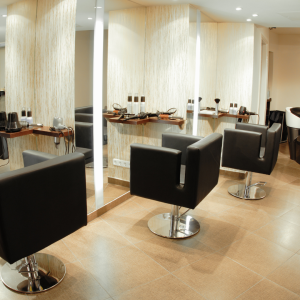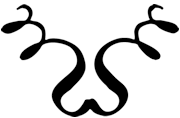Micro Locs maintenance to strengthen your roots
Although I started my locs with tiny braids, a certified Sisterlocks consultant has always maintained my braid locs. That is a bit different than interlock maintenance. Interlocking is usually a four-point rotation, 12-6, 3-9, 6-12, 9-3 as you can see in the video. A Sisterlock rotation though doesn’t necessarily have to be a four-point rotation.
A Sisterlocktitian is trained to start and maintain your locs based on the curl pattern of your hair. So, depending on the type of curl on your head, you can have a three, four or five-point rotation. The new growth on my micro locs have always been maintained with a three-point rotation.
Thinning locs
Sisterlocks maintenance has been working fine for me in all the seven years I’ve been locked. My hair looked and felt great. At one point I even felt like my locs were a bit too thick. With hardly any manipulation but only “sisterlocking” the new growth to the rest of hair, my locs swelled. They became thicker.
Even after the emotional stress of my sister’s passing took a toll on my hair and my locs were seriously thinning, my hair came back.
You don’t have to worry about your locs being too thick for very long though. The longer your locs get the thinner they will become. Aging of course, also plays a factor. This is what I learned last year.
Loc maintenance
Although I still have a full head of hair slowly but surely I noticed that the space in between my locs was widening. Since I am in Suriname where there are no certified Sisterlocktians, I had a local loctitian maintain my roots the way they usually maintain locs which is called “instoppen” in Dutch.
Johanna Master Loctitian and owner of the Hair Box Keizerstraat, Paramaribo, Suriname.
The difference
As far as I know, this method is not widely used in the US, especially not on micro locs because it takes much more time. Although it may look like interlocking it is not. Where interlocking is crocheting the new growth onto the rest of the loc, this method threads the new growth with a needle and then pulls it through a loc. A crochet hook can also be used for thicker locs.
Threading the new growth through a loc is not easy and takes a lot of time but it has one advantage: it makes the loc base stronger.
This is the 2nd time my locs were maintained this way and my roots feel stronger. It’s a method I would recommend and hope to continue to do in the future.
The question is how do you call this type of loc maintenance? It is not interlocking, it is not palm rolling nor twisting. It looks like the crochet braiding technique that I see in videos.
Click to shop loc products
In the meantime, I got a new style too! Barrel rolled Micro locs.

Here is a link to the products I use: The best loc products



